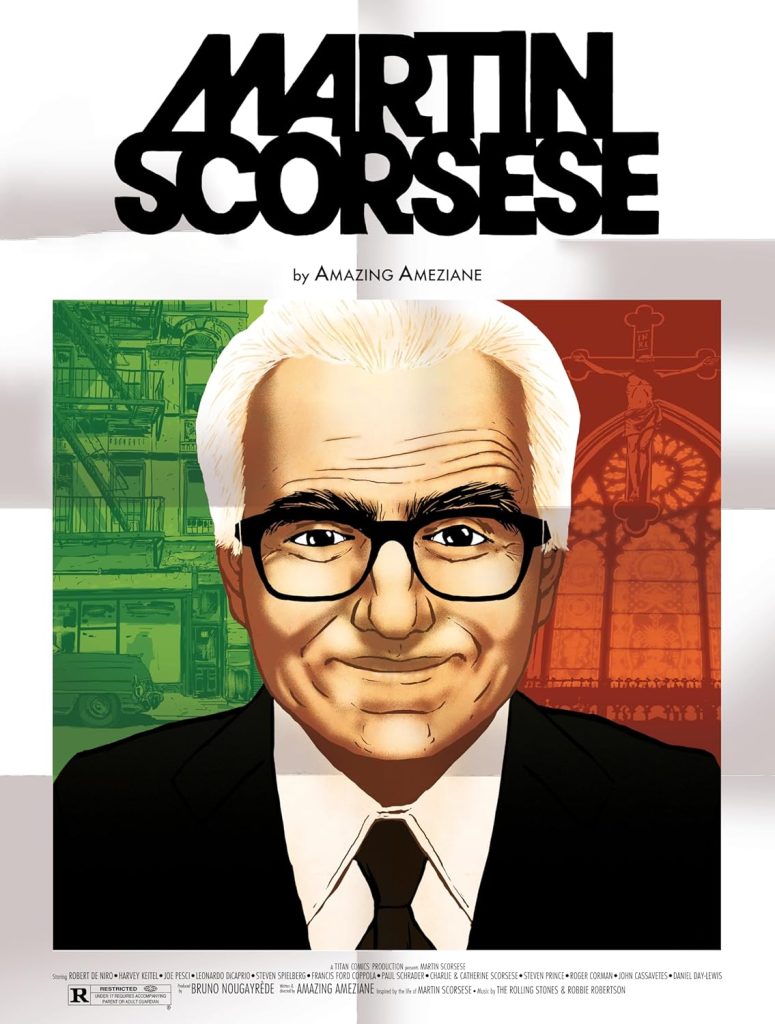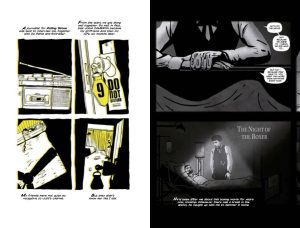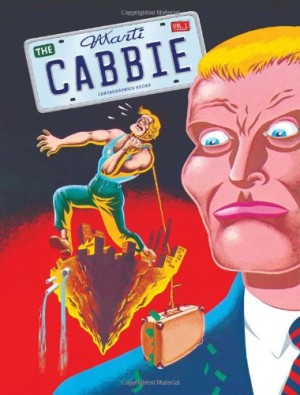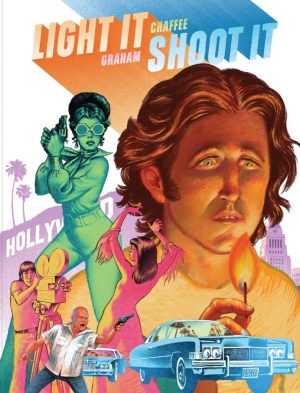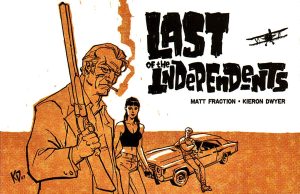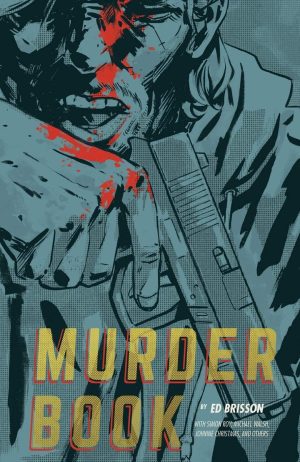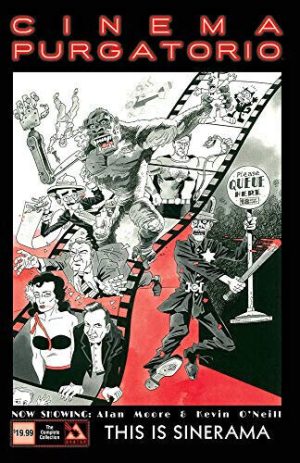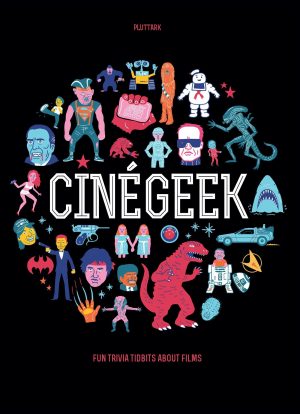Review by Frank Plowright
Amazing Améziane’s canon of film director biographies expands to a trilogy with his spotlight on Martin Scorsese. Scorsese, though, has been considerably more prolific and displayed a greater diversity than previous subjects Francis Ford Coppola and Quentin Tarantino. It requires almost four hundred pages to do him justice. This is one hefty book.
While there’s now a pattern to Améziane’s chronological film by film approach, the formula is adaptable enough to include interesting detours, such as the prologue of Scorsese arriving on a film set and making his way through the assorted staff with a word or two for each. As before, Améziane delivers the biography as if narrated by the subject, again presumably with copious reference to interviews.
It’s likely Martin Scorsese’s greatest appeal is to fans of the director’s work, but more casual readers may be converted by Améziane’s enthusiastic art and Scorsese’s engaging personality, which transmits. Scorsese is a more anecdotal storyteller than Coppola, both in his films and in this narrative, with the early family history featuring wonderful stories, and fascinating snippets from Scorsese’s youth signpost his films. A full biography in no rush to head to directing work means Améziane shows how influences of church, local gangsters and family were absorbed early, while enduring youthful asthma meant cinema visits were a safe passion.
As in his previous biographies Améziane has an amazing versatility able to work in several different styles, with the range of illustrative and layout techniques employed impressive and stimulating. It diminishes slightly on reaching Scorsese’s directing career where reproducing scenes and stills comes to predominate, although always imaginatively presented. Given how Améziane’s previous two books were so visually diverse, this is a notable achievement. Innovations here include presenting one recollection as a stained film script and the sample art showing a marriage suite as a crime scene. His only real weakness is likenesses. He captures Scorsese, but several others aren’t quite there.
A couple of dozen pages cross over with the Coppola biography as he, Scorsese and George Lucas were very close in the 1970s, but they’re part of Scorsese’s constant joy of cinema’s history and its potential for the future. That’s represented by Scorsese gleefully recounting composer Bernard Herrmann’s CV starting with Citizen Kane, moving through Alfred Hitchcock’s peak era and noting Scorsese’s Taxi Driver was his final score.
When it comes to Scorsese’s better known films there’s enough space to do them all justice, both during production and after, and for those who’ve never read a Scorsese biography before some of the stories are astounding. The sample art, for instance, also shows the strange beginnings of Raging Bull, which we later see as a term that could be applied to now disgraced film producer Harvey Weinstein. However, Scorsese’s career is so long and diverse that many projects are inevitably only mentioned in passing. There is room, though, for other moments such as long dark nights of the soul and an enduring friendship with Michael Powell, the English film director from the previous generation. There is some glossing over, particularly regarding the use of mobsters in Goodfellas, and one wonders how someone earning Scorsese’s kind of money can be forever in debt, but Scorsese’s mixture of personal insecurity, religious principles and cinematic certainty shines through.
Améziane’s books on Tarantino and Coppola were good, but this is an astonishingly imaginative anecdotal treasure trove. It’s excellent.
